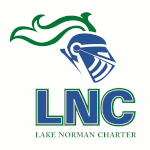2020 Colonial Pipeline oil spill
A major oil spill from the Colonial Pipeline in a nature reserve near Huntersville, North Carolina, United States, began on July 27, 2020. The spill resulted in approximately 2,000,000 U.S. gallons (7,600,000 L) of gasoline discharge and led to a cleanup effort that is still ongoing and expected to continue for several years. Several sources have noted that the spill is one of the largest in the history of the United States, with EnergyWire calling it "the largest U.S. gasoline pipeline spill on record". The Colonial Pipeline is the largest fuel pipeline system in the country, running for 5,500 miles (8,900 km) from Texas to New Jersey. In North Carolina, the system includes a 40-inch (1.0 m) diameter gasoline pipe. On August 14, two teenagers in Mecklenburg County discovered a puddle of gasoline near a buried section of this pipe in the Oehler Nature Preserve and alerted authorities. Within days, the Colonial Pipeline Company shut down that section of the pipeline and brought in over 200 workers to help repair the pipe and begin cleanup efforts. The pipe was in operation within five days of the spill being noticed after a cracked section of the pipe containing a Type A sleeve from a previous repair from 2004 was replaced. At the same time, the company estimated that about 63,000 U.S. gal (240,000 L) had leaked. However, as the cleanup continued over the next several months, the estimate continued to grow, and by July 2022, the revised estimate was 2,000,000 U.S. gal (7,600,000 L), making it one of the largest gasoline spills in U.S. history. Additionally, the company discovered that corrosion issues with the type of sleeve used in the 2004 repair was the cause of the leak. In November 2021, the North Carolina Department of Environmental Quality sued the company over the spill, eventually agreeing to a consent decree wherein the company would pay nearly $5 million in penalties and take several actions ordered by the department, including monthly and quarterly testing on nearby water sources, providing additional information on the size of the spill, and submitting a corrective action plan and schedule to the department. By July 2022, the company had identified and replaced all other Type A sleeves on their line, costing them $50 million. Additionally, cleanup efforts in Mecklenburg County, which had cost the company $50 million to that point, were ongoing and expected to last for several more years.
Excerpt from the Wikipedia article 2020 Colonial Pipeline oil spill (License: CC BY-SA 3.0, Authors).2020 Colonial Pipeline oil spill
Huntersville-Concord Road,
Geographical coordinates (GPS) Address Nearby Places Show on map
Geographical coordinates (GPS)
| Latitude | Longitude |
|---|---|
| N 35.414444444444 ° | E -80.806388888889 ° |
Address
Huntersville-Concord Road
Huntersville-Concord Road
28087
North Carolina, United States
Open on Google Maps





